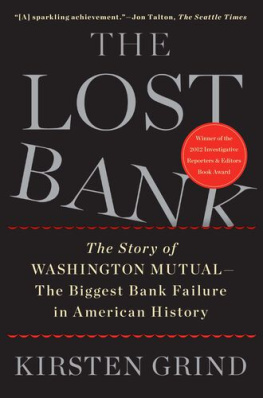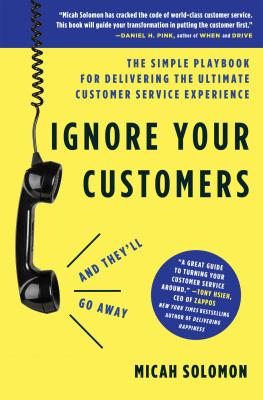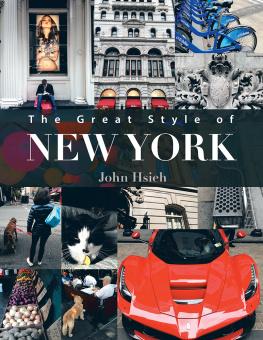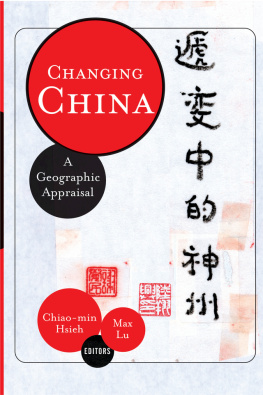Thank you for downloading this Simon & Schuster ebook.
Get a FREE ebook when you join our mailing list. Plus, get updates on new releases, deals, recommended reads, and more from Simon & Schuster. Click below to sign up and see terms and conditions.
CLICK HERE TO SIGN UP
Already a subscriber? Provide your email again so we can register this ebook and send you more of what you like to read. You will continue to receive exclusive offers in your inbox.
We hope you enjoyed reading this Simon & Schuster ebook.
Get a FREE ebook when you join our mailing list. Plus, get updates on new releases, deals, recommended reads, and more from Simon & Schuster. Click below to sign up and see terms and conditions.
CLICK HERE TO SIGN UP
Already a subscriber? Provide your email again so we can register this ebook and send you more of what you like to read. You will continue to receive exclusive offers in your inbox.
For Lauren Youre right, happiness is just persistence and sheer will.
FOREWORD
How to read this book
T he publication of the hardcover edition of The Kingdom of Happiness and the events in my own life that followed underscored for me that the reader would benefit from an advance understanding of the account and its context. This is not a traditional business book. It is as much the story of a happiness cult under the auspices of an urban revitalization project; and one that is ironically often devoid of happiness. It is a story about the seduction of power and fame, a modern-day Pied Piper who led a contingent of people to Las Vegas promising the American Dream. Tony Hsieh, the CEO of online shoe retailer Zappos who made his fortune selling happiness to the masses, created a $350 million investment vehicle that he called the Downtown Project to achieve his vision of an urban utopia in the harsh Nevada desert.
Silicon Valley biographers have found a comfortable cadence documenting the industrys magnetic and mysterious leaders, who can justify any kind of behavior in the name of innovation. It has led to acceptance of the Steve Jobs complexassociating what borderlines on sociopathic behavior with extraordinary success. Mark Lipton, Professor of Management at The New Schools Milano School, is among a growing field of researchers who are investigating this long-standing cultural phenomenon. In his book Mean Men, Lipton, through presenting a series of case studies, urges us to develop a new model for leadership. This book, too, asks readers to reevaluate the types of leaders they uphold as models for innovation and worthy of praise. The typical Silicon Valley narrative shapes its founder to fit mythologist Joseph Campbells Heros Journey, all the while stripping leaders of their humanity and providing readers with a false sense of reality. For that reason, this book does not use a traditional storytelling structure.
The Kingdom of Happiness deeply questions American values through the lens of Silicon Valley tech culture, raising important questions about entrepreneurship, business management methods, and human values, as Kirkus Reviews observed. It accomplishes this by wading through the depths of the Downtown Project, a microcosm of Silicon Valley, and the corporate experiments unfolding inside Amazon-owned Zappos. Downtown Project, built on hype and impacted by a series of suicides, a wayward moral compass, and organizational chaos, contains more elements of tragedy than urban renewal. There are no heroes here.
The book is designed to mirror the chaos, emotionality, and collective psychology of the zeitgeist during the Downtown Projects five-year run from 20122017. Donald Millers Blue Like Jazz inspired the structure of this book, which is improvisational in form and incorporates stream-of-consciousness thought. Most important, Blue Like Jazz has soulsomething that the Downtown Project sought but never found. The Kingdom of Happiness is structured to begin as if it were a traditional business book, then transitions to engage with readers more intimately. The predominantly raw, unscripted style is a direct response to the tightly crafted narratives favored by Silicon Valley. It also conveys the undercurrent of the community; behind its veneer is a collective, desperate search for soulfulness, a sense of belonging, and human connection.
Readers criticized Hsieh for including few supporting characters in his 2010 autobiography, Delivering Happiness , highlighting himself as the sole protagonist and hero. I chose to do the opposite with The Kingdom of Happiness. At the risk of frustrating the reader, I incorporated as many people as I could reasonably include in this book to convey the size and scope of the community. Most of these characters are introduced in the front of the book (Years 1 and 2). The successive chapters scale back on characters, and move to focus on the anthropological, sociological, and spiritual dimensions of the project. (The business lessons are fairly straightforward, and at times irrelevant, as the Downtown Project was operating by a different set of rules.)
There are only a few key players that I build throughout the book, including former Zappos chairman, CFO, and COO Alfred Lin; Hsiehs right hands Fred Mossler and Zach Ware; real estate mogul Andrew Donner; Las Vegas restaurateur Michael Cornthwaite; Zappos founder Nick Swinmurn; Heidy and Chad Stamper; and Janice Lopez. (The organizational chart and character descriptions are available at thekingdomofhappiness.com/orgchart.) Viewed as a cult, most people in the community fit the profile of a sycophant; even a majority of the stronger characters remain complicit to Hsiehs larger goals. There were few characters who had the courage to speak out publicly about the alarming series of events that unfolded over the yearsthe short list includes University of Iowa professor and former Downtown Project employee Dave Gould, and Henry Kang, an investor with a background in private equity and venture capital who had no formal attachments to the project, and therefore nothing to lose.
So as not to shine an uncomfortable spotlight on community members, I took on the precarious role of conveying its collective emotion and psychology as a character in the book. I adopted the social norms and treated the book like a start-up, taking on a founders mentality in order to understand the extent of the groupthink. One reader observed the degree of psychological warfare I encountered while reporting The Kingdom of Happiness , and shared his thoughts in an email:
The closest analogy I can think of is when reporters go to war so that they can cover the war. Im pretty sure that takes an enormous amount of courage. However what is different about your situation is that its pretty easy to size up a war when it first happens... It must have been a lot more complicated situation to figure out how exactly you were to cover the story you were seeing unfold.
This is not what I signed up for. When I moved to downtown Las Vegas and committed to writing the book in summer 2013, I thought I was joining an urban revitalization project that was catalyzing a start-up ecosystem. When I pitched Hsieh on the book, I drew parallels between Downtown Project and my church in Brooklyn. The Downtown Project used religious and spiritual language to successfully sell its mission. As the inner workings of the Downtown Project became clearer over time, I struggled with accepting the much darker story that I had inadvertently walked into and built my life around. Perhaps as a survival mechanism, I, too, developed empathy for Hsieh and other gatekeepers. In hindsight, that outcome was nearly unavoidable, as I operated in survival mode for the four years I dedicated to the book with limited capital, wholly devoting my life to a project with an uncertain outcome. Even in the months following my books publicationand for all that I uncoveredI was still in denial about what I had experienced, and not out of survival mode just yet, so therefore I maintained a psychological connection to the project and some of its participants, including Hsieh.
Next page









